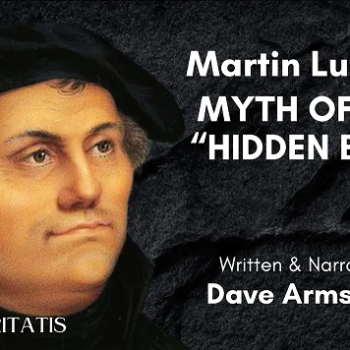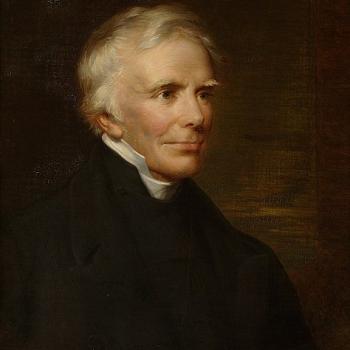
Atheist anti-theist Jonathan M. S. Pearce is the main writer on the blog, A Tippling Philosopher. His “About” page states: “Pearce is a philosopher, author, blogger, public speaker and teacher from Hampshire in the UK. He specialises in philosophy of religion, but likes to turn his hand to science, psychology, politics and anything involved in investigating reality.” .
*****
I am replying to the post on Jonathan’s site, “Contradictions in the Resurrection of Jesus Accounts” (1-31-21): a guest-post written by one David Austin. This is my second reply. The first dealt with the 18-point chart. Now I tackle the text after it. David Austin’s words will be in blue.
*****
Paul has no mention of an empty tomb; Just Jesus was “buried”.
Acts 13:28-37 (RSV) Though they could charge him with nothing deserving death, yet they asked Pilate to have him killed. [29] And when they had fulfilled all that was written of him, they took him down from the tree, and laid him in a tomb. [30] But God raised him from the dead; [31] and for many days he appeared to those who came up with him from Galilee to Jerusalem, who are now his witnesses to the people. [32] And we bring you the good news that what God promised to the fathers, [33] this he has fulfilled to us their children by raising Jesus; as also it is written in the second psalm, `Thou art my Son, today I have begotten thee.’ [34] And as for the fact that he raised him from the dead, no more to return to corruption, he spoke in this way, `I will give you the holy and sure blessings of David.’ [35] Therefore he says also in another psalm, `Thou wilt not let thy Holy One see corruption.’ [36] For David, after he had served the counsel of God in his own generation, fell asleep, and was laid with his fathers, and saw corruption; [37] but he whom God raised up saw no corruption.
[“tomb” was mentioned in 13:29, then Paul says Jesus was “raised him from the dead.” That’s an “empty tomb” is it not?: by straightforward logical deduction. Jesus wasn’t there anymore, and “for many days he appeared” (13:31). Inexorable conclusion: empty tomb!] There are many many more references to Jesus’ Resurrection in Paul:
Acts 17:2-3 And Paul went in, as was his custom, and for three weeks he argued with them from the scriptures, [3] explaining and proving that it was necessary for the Christ to suffer and to rise from the dead, and saying, “This Jesus, whom I proclaim to you, is the Christ.”
Acts 17:30-31 The times of ignorance God overlooked, but now he commands all men everywhere to repent, [31] because he has fixed a day on which he will judge the world in righteousness by a man whom he has appointed, and of this he has given assurance to all men by raising him from the dead.”
Acts 26:22-23 To this day I have had the help that comes from God, and so I stand here testifying both to small and great, saying nothing but what the prophets and Moses said would come to pass: [23] that the Christ must suffer, and that, by being the first to rise from the dead, he would proclaim light both to the people and to the Gentiles.”
Romans 1:4 and designated Son of God in power according to the Spirit of holiness by his resurrection from the dead, Jesus Christ our Lord,
Romans 4:24 . . . It will be reckoned to us who believe in him that raised from the dead Jesus our Lord,
[see also: Rom 4:24-25; 6:4-5, 9; 7:4; 8:11, 34; 10:9; 1 Cor 6:14; 15:3-8, 12-17, 20; 2 Cor 4:14; 5:15; Gal 1:1; Eph 1:20; Phil 3:10; Col 2:12; 1 Thess 1:10; 2 Tim 2:8]
Normal practice with crucified victims was for their bodies to rot on the cross, and then thrown into a mass grave.
It’s pretty impossible to argue that there could be no conceivable exceptions to this “normal practice” ever. So it’s much ado about nothing. But Protestant apologist Timothy Paul Jones offers an excellent rebuttal to this argument (fashionable among atheists and skeptics): “Is it Possible That Jesus’ Body Was Left on the Cross?” (4-6-12).
According to Paul, if the Resurrection had not occurred, then Christians’ faith is in vain. One would, therefore, expect the Resurrection to be the best corroborated event in the NT, but, as you can see, in the above chart, this is NOT the case. If there are contradictions, this means at least one account (& maybe more) is incorrect.
That’s why I wrote this paper and the one before it. I believe I refuted all 18 alleged contradictions, so there is nothing to the charge. And if indeed contradictions aren’t demonstrable, as I contend, then it means that the atheists coming up with such bogus nonsense have a serious problem with 1) logic and [possibly] 2) reading comprehension. They certainly don’t — on the whole — have a clue about biblical exegesis. I’ve shown that over and over in my refutations of atheist “exegetes”: who approach the Bible (as I always say) like a butcher approaches a hog.
The four Gospels are anonymous; The “authorship” of these writings was a 2nd Century addition and was merely speculation by the early Church. The gospels were written in Greek, but it is generally agreed that Jesus & the Disciples spoke Aramaic and were “unlettered”.
Tax collectors for the Romans were in fact, literate and well-educated. Thus, Matthew very likely would have known Greek and Latin. We learn from Colossians 4:14 that Luke was a medical doctor. Wyatt Graham observed:
Consider for example the testimony of a bishop named Papias [c. 60-c. 130 AD] who lived while some disciples of Jesus still lived. For example, he had access to John the elder and Ariston, who were disciples of Jesus. He also knew of the daughters of Phillip who lived nearby to him (Acts 21:8–9). And Papias records the words of one of Jesus’ disciples by the name of John the Elder regarding Mark’s Gospel:
And the elder used to say this: “Mark, having become Peter’s interpreter, wrote down accurately everything he remembered, though not in order, of the things either said or done by Christ. For [Mark] neither heard the Lord nor [accompanied] him, but afterward, as I said, [accompanied] Peter. (Frag. Pap. 3.15; I modified slightly Holmes’ translation) . . .
Papias also records that Matthew wrote the Gospel according to Matthew (Frag. Pap. 3.16). So, Papias lived while disciples of Jesus still lived, and he also lived when the Gospels were being written (or was born around this period). And it is Papias who affirms that Peter committed his preaching to words through Mark’s hand (through the testimony of John). And it is Papias who affirms that Matthew, an apostle of Jesus, wrote the Gospel according to Matthew.
As for Luke as the author of the book bearing his name, see: “Who Wrote the Gospel of Luke and Acts” by Brian Chilton (7-2-17), and by the same writer: “Who Wrote the Gospel of John?” (9-3-17). Chilton thinks that John dictated his Gospel.
Matthew & Mark have the women being instructed for the Disciples to meet Jesus in Galilee.
So what? Unless they say something like “this is the only time they saw the risen Jesus” there is no contradiction. It gets very tiresome having to reiterate elementary logic over and over.
Matthew has the Disciples’ one & only sighting of Jesus on a mountain in Galilee.
This is an absolutely classic and “textbook” example of the dumbfounded and intellectually dishonest methodology of atheist Bible-bashers: seeing “contradictions” under every rock. Nothing in the text of Matthew even remotely hints at this being the “one & only sighting of Jesus.” That’s simply a groundless, completely arbitrary extrapolation from David Austin’s brain with nothing to back it up.
The original manuscripts of Mark end at Chapter 16 verse 8 (Frightened women run from the tomb and tell no-one). . . . Since the women, in Mark, don’t tell the Disciples about what they were told, we can only speculate whether they ever met Jesus at all.
I dealt with this claim concerning the supposed non-canonicity of Mark 16:9-20 in the previous paper. But even if one accepts the shorter version of Mark 16, I wrote about 16:8 in another paper on this same topic:
1) The last clause gives no indication of how long they “said nothing.” It may not have been very long at all. We can only guess or speculate. 2) “Said nothing” with no indication of how long the silence was, is not the same thing as saying that they never mentioned it to anyone, ever.
Luke & John contradict Matthew. Luke has two Jesus meetings with the Disciples, prior to a locked room meeting, (ie. With two Disciples on the road to Emmaus, and a meeting with Peter {time & location unspecified}) followed by a meeting with all Eleven Disciples in a room in Jerusalem. At this meeting, Jesus specifically tells them NOT to leave Jerusalem until “clothed in power from on high” (ie Pentecost). No 2nd meeting in Jerusalem or Galilee meeting.
Unlike Luke, John has the 1st sighting of Jesus by Ten Disciples in a locked room in Jerusalem, followed by two more appearances to them; 2nd in Jerusalem to Eleven and 3rd at the Sea of Tiberias to seven (This appearance specifically noted as the 3rd, hence NO prior visit to Galilee, “Road to Emmaus” or separate meeting with Peter). . . . Paul’s Corinthians 15:3 states that the first appearance of the resurrected Jesus was to Cephas (Peter), but according to the Gospel accounts the first witness(es) would be Mary Magdalene & the other Mary, Mary Magdalene alone, or Cleopas & another un-named Disciple, not Peter.
For a quite sufficient explanation, see the article, “To Galilee or Jerusalem?” by Eric Lyons, at the excellent Apologetics Press website. Here is the heart of his argument:
The truth is, Jesus met with His disciples in both places, but He did so at different times. One of the reasons so many people allege that two or more Bible passages are contradictory is because they fail to recognize that mere differences do not necessitate a contradiction. For there to be a bona fide contradiction, not only must one be referring to the same person, place, or thing in the same sense, but the same time period must be under consideration. . . .
Similarly, Jesus met with His disciples both in Jerusalem and in Galilee, but at different times. On the day of His resurrection, He met with all of the apostles (except Thomas) in Jerusalem just as both Luke and John recorded (Luke 24:33-43; John 20:19-25). Since Jesus was on the Earth for only forty days following His resurrection (cf. Acts 1:3), sometime between this meeting with His apostles in Jerusalem and His ascension more than five weeks later, Jesus met with seven of His disciples at the Sea of Tiberias in Galilee (John 21:1-14), and later with all eleven of the apostles on a mountain in Galilee that Jesus earlier had appointed for them (Matthew 28:16).
Sometime following these meetings in Galilee, Jesus and His disciples traveled back to Judea, where He ascended into heaven from the Mount of Olives near Bethany (Luke 24:50-53; Acts 1:9-12). None of the accounts of Jesus’ post-resurrection appearances contradicts another. Rather, each writer supplemented what a different writer left out. . . .
Still, one may ask, “Why did Jesus command His apostles to ‘tarry in the city of Jerusalem’ on the day of His resurrection until they were ‘endued with power from on high’ (Luke 24:49), if He really wanted them to meet Him in Galilee?” Actually, it is an assumption to assert that Jesus made the above statement on the same day that He arose from the grave. One thing we must keep in mind as we study the Bible is that it normally is not as concerned about chronology as modern-day writings.
Frequently (especially in the gospel accounts), writers went from one subject to the next without giving the actual time or the exact order in which something was done or taught (cf. Luke 4:1-3; Matthew 4:1-11). In Luke 24, the writer omitted the post-resurrection appearances of Jesus in Galilee (mentioned by both Matthew and John). However, notice that he never stated that Jesus remained only in Jerusalem from the day He rose from the grave until the day He ascended up into heaven.
See also an article from the always superb Christian Think Tank site, by Glenn Miller, entitled, “Do the Resurrection accounts HOPELESSLY contradict one another?” He includes the following summary of Protestant theologian and exegete Murray Harris’ chronological schema of post-Resurrection appearances of Jesus:
1. Mary Magdalene followed Peter and John to the tomb, saw two angels inside, and then met Jesus (John 20: 11-17; cf Mark 16:9).
2. Mary (the mother of James and Joses) and Salome met Jesus and were directed to tell his brethren to go to Galilee (Matt. 28:9-10).
3. During the afternoon Jesus appeared to two disciples on the way to Emmaus. They then returned to Jerusalem to report the appearance to the Eleven and others (Luke 24:13-35; c£ Mark 16:12-13).
4. Jesus appeared to Peter (Luke 24:34; 1 Cor. 15 :5).
5. That evening Jesus appeared to the Eleven and others (Luke 24:33), Thomas being absent (Luke 24:36-43; John 20:19-23; 1 Cor. 15:5; cf Mark 16:14).
6. One week later Jesus appeared to the Eleven, Thomas being present (John 20:26-29) .
7. Seven disciples had an encounter with Jesus by the Sea of Tiberias in Galilee (John 21: 1-22).
8. The Eleven met Jesus on a mountain in Galilee (Matt. 28:16-20; cf Mark 16:15-18).
9. Jesus appeared to more than five hundred people (Luke 24:44-49; 1 Cor. 15:6).
10. He appeared to James (1 Cor. 15 :7) .
11. Immediately before his ascension, Jesus appeared to the Eleven near Bethany (Luke 24:50-52; Acts 1:6-11; 1 Cor. 15:7; cf Mark 16: 19-20).
Assuming the women had gone to anoint the body, how did they expect to gain access to the body with the stone in position, and guards barring the entrance? (Note: Only Matthew mentions guards at the tomb) Protestant apologist William Lane Craig adequately refutes this:
Would that have kept the women away? Well, maybe so, but only if they knew of the guard. But did they know? When you read Mark and Matthew’s accounts of the women’s observation of Jesus’ interment (Mark 15.46-47; Matthew 27.57-61), what you find is that the guard was not posted on Friday when the women watched Joseph inter the body in the tomb. The guard was something of an afterthought on the part of the Jewish authorities, who went to Pilate on the following day (Saturday) to ask that the tomb be sealed and a guard posted before it.
Saturday was, of course, the Jewish Sabbath, and Luke records of the women that “On the sabbath they rested according to the commandment” (Luke 23.56). Like the male disciples, they may have remained in seclusion all that day (cf. John 20.19). So there’s no reason at all to think that when the women set out for the tomb at early dawn on Sunday morning, they expected to find that the tomb was guarded and sealed. That’s why “they were saying to one another, ‘Who will roll away the stone for us from the door of the tomb?’” (Mark 16.3). They didn’t know if anybody would be there. So I see no problem in affirming the compatibility of Matthew’s guard story with the women’s intent to anoint Jesus’ corpse.
As to the stone, Fr. Charles Grondin proposes two possible solutions to the proposed “difficulty”:
The women had seen where Jesus had been placed (Mark 15:47) but might not have stayed long enough to see the stone rolled in front of the tomb, and they asked the question recorded in Mark 16:3 only once they saw the stone from a distance. . . .
The woman expected to encounter other people either along the way or in the vicinity who could roll it back for them—for example, the gardener (John 20:15).
Why was stone rolled away if Jesus could enter locked rooms? Maybe for some-one to remove the body?
Orthodox Christian Network answers this:
There can hardly be any Christian believer who doesn’t know that an angel descended from heaven and rolled away the stone from the entry to the tomb where the Creator of life lay dead, without breath. Very few, however really know why the stone was rolled away. Most people confuse two things which are independent of each other: the Lord’s exit from the tomb and the rolling away of the stone.
In other words, they think that the angel came down and rolled away the stone so that the Lord could emerge, that when He did so there was an earthquake which terrified the guards to such an extent that they ‘became as if dead’. This is not only what ordinary Christians believe, but even what some of those who preach the Gospel think. In many icons of the Resurrection, in fact, both Byzantine and Western, we see the angel taking away the stone and the Lord emerging from the tomb, while the guards, terrified at the sight of Him, fall down as if dead.
This is historically inaccurate! If you study the Gospel of Matthew carefully, you’ll see that the Lord had emerged from the tomb before the descent of the angel, the rolling away of the stone, and the earthquake which occurred at the same time. The stone was rolled away, not so that the Lord could emerge, but to demonstrate that He’d already done so.
If Mary’s tomb visit (in John) was earlier than the visit in Matthew, why did she not encounter any guards?
Because, as John 20:1 states, she “saw that the stone had been taken away from the tomb.” An angel had already removed the stone and as a result, “the guards trembled and became like dead men” (Mt 28:4). Presumably they also fled as a result (likely for fear of their lives, for the penalty for not properly guarding something was death in Roman law); therefore, Mary didn’t see them.
Matthew & John say the women/woman met Jesus at the tomb, but Mark & Luke says there was NO such meeting.
Where do Mark and Luke say there was no such meeting? They don’t. So this is just another non-contradiction that atheists somehow conjure up as an authentic one. To not mention something is logically not the same as denying the same thing. The latter would have been a contradiction if Mark and Luke actually did it. But they didn’t, so it isn’t. But it’s another classic example of atheist special pleading.
The women in Luke see two men inside the tomb BEFORE Peter inspects the empty tomb, but John says that Mary Magdalene saw two angels inside the tomb AFTER Peter & Beloved Disciple had inspected the tomb.
So what? Angels could have been there both times.
The ascension of Jesus is only mentioned in Luke, apparently on the same day as his resurrection (contradicted in Acts [supposedly also written by “Luke”] which says Jesus remained on earth for forty days).
I answer that in this paper: Seidensticker Folly #15: Jesus’ Ascension: One or 40 Days? [9-10-18]
How did the chief priests and Pharisees know that Jesus would be resurrected after 3 days when the Disciples didn’t seem to understand this?
Two Bible commentaries (writing about Matthew 27:63) provide answers:
It appears, then, that though they had deliberately stirred up the passions of the people by representing the mysterious words of John 2:14 as threatening a literal destruction of the Temple (Matthew 26:61; Matthew 27:40), they themselves had understood, wholly or in part, their true meaning. We are, perhaps, surprised that they should in this respect have been more clear-sighted than the disciples, but in such a matter sorrow and disappointment confuse, and suspicion sharpens the intellect. (Ellicott’s Commentary for English Readers)
after three days I will rise again: now, though he said to his to his disciples privately, Matthew 16:21, yet not clearly and expressly to the Scribes and Pharisees; wherefore they must either have it from Judas, and lied in saying they remembered it: or they gathered it either from what he said concerning the sign of the prophet Jonas, Matthew 12:40, or rather from his words in John 2:19, and if so, they acted a most wicked part, in admitting a charge against him, as having a design upon their temple, to destroy it, and then rebuild it in three days; when they knew those words were spoken by him concerning his death, and resurrection from the dead: they remembered this, when the disciples did not: bad men have sometimes good memories, and good men bad ones; so that memory is no sign of grace, (Gill’s Exposition of the Entire Bible)
Who witnessed this meeting when guards were sent to secure the tomb? Who witnessed the meeting between the guards and the chief priests when a bribe was suggested?
Simply because we can’t determine either thing from the texts alone, doesn’t mean or logically follow that there were none, or that this person or persons could not have communicated it to Matthew. Matthew may have also received it by direct revelation from God (under the Christian view that the Bible is inspired writing and God’s revelation to mankind). In any event, this is not a “contradiction”; only an unknown (two different things). But certainly plausible hypotheses exist.
Paul says Jesus appeared to “The Twelve” but if Judas Iscariot was no longer a Disciple, there would be only eleven of them left for Jesus to appear to, not twelve.
Protestant apologist Eric Lyons provides the rebuttal:
Numerous alleged Bible discrepancies arise because skeptics frequently interpret figurative language in a literal fashion. They treat God’s Word as if it were a dissertation on the Pythagorean theorem rather than a book written using ordinary language. . . . The simple solution to this numbering “problem” is that “the twelve” to which Paul referred was not a literal number, but the designation of an office. This term is used merely “to point out the society of the apostles, who, though at this time they were only eleven, were still called the twelve, because this was their original number, and a number which was afterward filled up” (Clarke, 1996). Gordon Fee stated that Paul’s use of the term “twelve” in 1 Corinthians 15:5 “is a clear indication that in the early going this was a title given to the special group of twelve whom Jesus called to ‘be with him’ (Mark 3:14).
This figurative use of numbers is just as common in English vernacular as it was in the ancient languages. In certain collegiate sports, one can refer to the Big Ten conference, which consists of 14 teams, or the Atlantic Ten conference, which is also made up of 14 teams. At one time, these conferences only had ten teams, but when they exceeded that number, they kept their original conference “names.” Their names are a designation for a particular conference, not a literal number.
In 1884, the term “two-by-four” was coined to refer to a piece of lumber two-by-four inches. Interestingly, a two-by-four still is called a two-by-four, even though today it is trimmed to slightly smaller dimensions (1 5/8 by 3 5/8). Again, the numbers are more of a designation than a literal number.
Biblical use of “the twelve” as a designation for the original disciples is strongly indicated in many Gospel passages. Jesus Himself did this: “Did I not choose you, the twelve . . .?” (Jn 6:70). He didn’t say, “did I not choose you twelve men.” By saying, “the twelve” in the way He did, it’s proven that it was a [not always literal] title for the group. Hence, John refers to “Thomas, one of the twelve” after Judas departed, and before he was replaced by Matthias (Jn 20:24). Paul simply continues the same practice. It was also used because “twelve” was an important number in biblical thinking (40 and 70 are two other such numbers). For a plain and undeniable example of this, see Revelation 21:12, 14, 21.
Luke contradicts himself in 3 places during this Resurrection account :- a) Early text states the women meet 2 men inside the tomb, but later says the women met 2 angels there. b) Early text has “only” Peter inspecting the empty tomb, but later text has “some” Disciples going to the tomb.
These two are simply not contradictions, as shown last time.
Early text has Jesus’ body being wrapped in a cloth, but later, the Disciples see cloths in the empty tomb. Matthew, Mark & Luke say Joseph wrapped Jesus’ body in “a clean linen cloth” (ie one cloth), but John says “linen cloths, as per Jewish tradition. John has the Disciples, when inspecting the empty tomb, seeing a separate cloth that covered Jesus’ head, & Luke mentions the Disciples seeing cloths.
Ethan R. Longhenry explains:
[O]ne particular detail is associated with Peter and John’s visitation to the tomb in John 20:4-7 . . . : the othonion, the linen cloths, were lying on the ground, and the soudarion, normally a handkerchief but also used to cover the head of a corpse (cf. Luke 19:20, John 11:44, Acts 19:12), was in its own place and rolled up. They were the only things left in the otherwise empty tomb.
Today we tend to dress up the dead in their best clothing or in some sort of clothing most special to them. In first century Judea it was customary to wrap the dead body in strips of linen cloths (othonion) and covering the face with the soudarion.
So this is two different things (apples and oranges). It’s not a “contradiction” (as I have by now explained umpteen times) because the head napkin is not mentioned by all accounts. The latter’s existence is not expressly denied (which would be a contradiction). It would be like the time I wore a suit and also my fedora to a wedding. Someone might say, “Dave was dressed up in his nicest suit” and another could say, “Dave was wearing his ‘gangster’ pinstriped suit and also a cool hat.” Both are true, and they are not contradictory. I was wearing a [pinstriped] suit, and I was wearing a hat, and I was wearing both.
When will anti-theist atheists hellbent on opposing the Bible at every turn, ever comprehend these elementary things? This is far from rocket science. Dumbfounded atheist attempted biblical “exegesis” — besides often being hysterically funny — seems to be an ongoing proof of Romans 1:21-22 (RSV): “. . . they became futile in their thinking and their senseless minds were darkened. [22] Claiming to be wise, they became fools,”
NB: Mark has Joseph of Arimathea buying a linen cloth. How could he buy this cloth when all shops were closed for Passover?
Theology Web hosted a discussion on this non-issue (“Joseph of Arimathea Buying Linen On Passover?”) in which one of the commenters shredded this “gotcha” question:
The imagined issue here is that it was illegal to work and to buy or sell goods on Passover per the following passages: [cites Ex 12:16; Lev 23:6-7; Neh 10:31]
Joseph, who was prominent on the council, would appear to be publicly breaking Jewish law by buying linen on Passover, and he couldn’t do it on the Sabbath (which was the next day) either. There appear to be a number of solutions to this issue though. So, starting with NT scholar Harold Hoehner, “The purchases of Joseph of Arimathea were proper for necessities could be obtained on the Sabbath (and on a feast day).” His source for this is Mishnah Shabbath 23.4[:] “One may await the dusk at the limits of the techoom, to furnish what is necessary for a bride and for a corpse, and to bring a coffin and shrouds for the latter.” “By ‘techoom’ is meant the distance of 2,000 ells [7,500 feet] which a man may traverse on the Sabbath, and refers to the limits of that distance.”
Hoehner also cites Gustaf Dalman’s Jesus – Jeshua: Studies in the Gospels (1929), where Dalman points out that these were extenuating circumstances. A criminal who had been hung (crucifixion was a type of hanging) had to be buried by nightfall to prevent the land from being defiled and burial on the Sabbath was likely not permitted. The body couldn’t lay out in the hot Judean environment for two days. It had to be buried,
See related papers:
Dialogue w Atheist on Post-Resurrection “Contradictions” [1-26-11]
Seidensticker Folly #18: Resurrection “Contradictions”? [9-17-18]
***
Photo credit: geralt (1-23-21) [Pixabay / Pixabay License]
***













